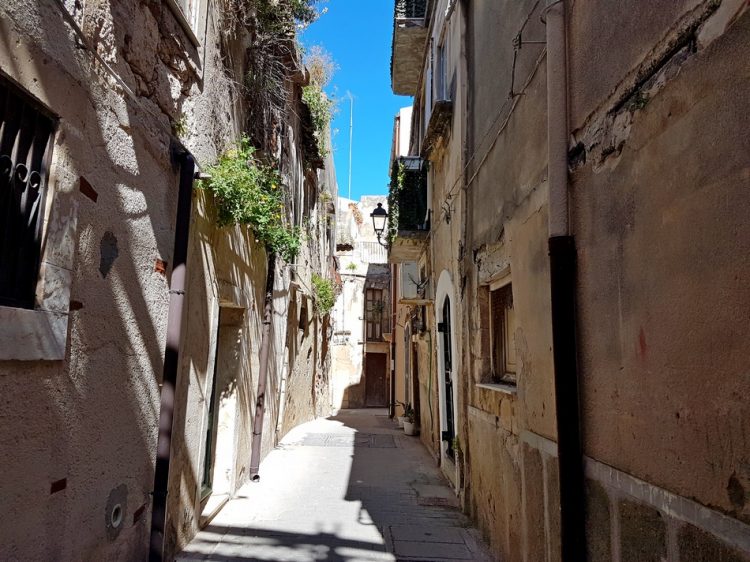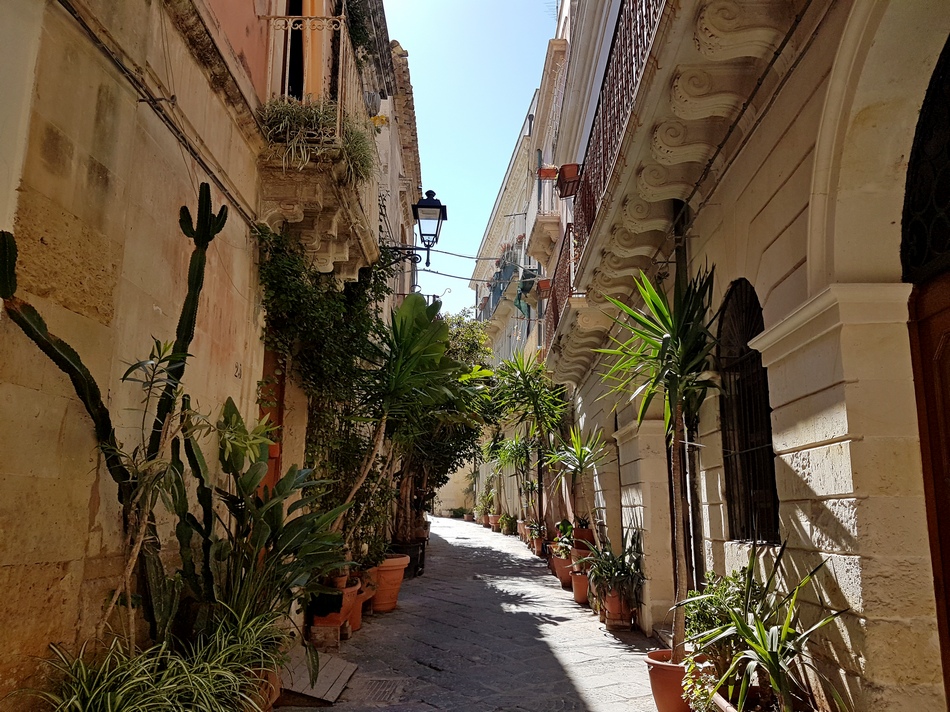
We will have the opportunity to talk about it twice about the district of La Giudecca in Ortigia, which hosts the holiday home in vicolo delle Pergole and that of Ronco III in Giudecca.
The overlapping of historical periods in this district is evident since the road layout: from the Greek strigas (network of “bands” streets arranged orthogonally and surrounded by walls, traditionally placed near the sea, with an east-west orientation) to memories of cohabitation multiethnic and religious, where the first documents that officially record the presence of a Jewish community in Ortigia date back to the first century. after Christ.

Vicolo III alla Giudecca is part of the frame of the small church of San Filippo Apostolo which encloses important historical and religious stratifications within its walls and underground. The place was, first of all, a quarry for building materials, a hypogeum in the early Christian era, sacred to the Jews as a synagogue until the time of Ferdinand the Catholic who on May 31, 1492 issued the edict that wanted to expel them from the territories of his kingdom.
To begin our exploration of the neighborhood we decided to first of all present vicolo delle Pergole: called by Syracusans in ancient times “a vanedda e pecuri” (where vanedda stands for alley and pecuri is credited as a simple distortion, by assonance, of the word pergole ).
The alley, which is not small, extends from via del Crocifisso to via Logoteta which are two roads of considerable importance adjacent to the area that can be defined as Giudecca proper, but which do not enclose it. Choosing to take Vicolo delle Pergole from one or the other entrance is almost like having to choose between two philosophies of life.

Via Logoteta is wide and sunny and opens almost to look like a square overlooked by houses, businesses and the church of San Francesco di Paola with the adjacent convent of the Minimal Fathers, also called “Paolotti”, built in 1705 and now seat of ISISC (the International Higher Institute of Criminal Sciences).
Via del Crocifisso is one of the most evocative streets of Ortigia, adorned with plants, welcoming and curvilinear, it is not crowded with shops and restaurants, but quiet: walking all the way up to via Roma, then to U Spiazzu, the most important of the island, the Piazza del Duomo.

It is so pleasant to stay in via Roma for that feeling of inclusion and vitality due to the presence of multiple activities and an international stroll, just as it is to spend your holidays in the apartment in vicolo delle Pergole, where you can take refuge to rest, perhaps afterwards. a day spent enjoying one of our experiential packages.
The natural beauty of this island, together with a calendar full of events all year round, make Sicily always a fantastic place to visit.
What are you waiting for?
Pagamenti accettati / We Accept



We are members of
